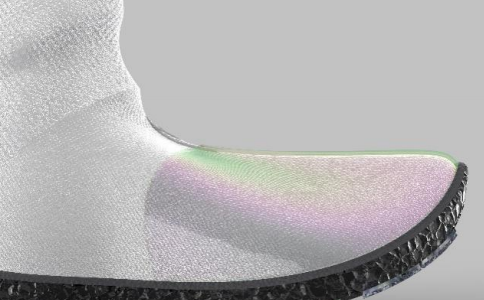In ‘Exploration and Analysis Based on Mass Customization Design and Production of Martial Arts Shoes,’ Wuhan University of Science and Technology researchers Peng Hong and Xia Xinqiao explore the dynamics not of mass production, but mass customization—putting the 3D printing spin on manufacturing, and a very interesting one at that as they go further to explain that while mass is usually associated with large amounts of items being made that all look exactly the same, and customization refers to unique and small productions (sometimes just one item), putting the two together could offer a novel ‘combination of two contradictory phenomena.’
 True, most consumers hear the word ‘customized’ and think ‘expensive.’ Individuals shopping today though will keep searching for that item with the perfect fit, color, and functionality—whereas as mass customization could save everyone a lot of time and effort and offer great profit to the right manufacturers.
True, most consumers hear the word ‘customized’ and think ‘expensive.’ Individuals shopping today though will keep searching for that item with the perfect fit, color, and functionality—whereas as mass customization could save everyone a lot of time and effort and offer great profit to the right manufacturers.
“Mass customized production could bring the maximum profit, make the products achieve single-digit differentiated production, so as to improve the product value, acquire data of consumers’ need, enhance the users experience and better build the brand reputation,” state the authors.
In the US, 25 percent of customers shopping online seek customized shoes. The authors realize the potential for continued customization via 3D printing, and for this study, they explored martial arts shoes as an example, beginning with a look at Puma’s efforts.
Puma has long been a proponent of allowing consumers to enjoy customizations, beginning with different colors and different shoelaces, but obviously that’s not too game changing. They went on in 2010 to create ‘Creative Factory,’ allowing customers to customize shoes at the storefront, choosing materials.
“However, these customized shoes are too small in scope with too little choice,” state the authors.
Along came Adidas though, with a huge emphasis on customization and the integration of 3D printing into their shoes—from 3D printed athletic shoes produced at scale and lace locks, to 4D shoes launched last year.
In terms of the best product and usability, the research team recognizes that martial arts shoes must protect the ankles and skin of the wearer, while also being lightweight and flexible to accommodate the wide range of movement required in what can be a very high-performance sport.
The authors discuss the challenges of mass customization as follows:
- Limited materials and molds for customizing shapes
- Difficulty in making large quantities
- Serious problems with exchanges of one-of-a-kind products
In overcoming current obstacles to manufacturing customized martial arts shoes, the researchers suggest use of a small foot scanner (by China’s Foot Technology Company) that could be installed in stores to measure feet and then upload data to a cloud database. The customized shoes would then be made in a factory.
“Customized shoes not only are precise on size, but also introduce concept of health to make the soles accurately correspond to the wearer’s foot acupoints as massage function. The realization of massage function helps people know that customized shoes is not only shown in the surface, such as size replacement and material, but also shown in the customized function, which is more important in consumers’ minds,” state the researchers.
Using Adidas’ model for Future Craft 4D sneakers, they realize the potential for better speed, affordability, and quality in product, pointing out that it only takes 20 minutes to make a pair of Future Craft shoes. And with the accompaniment of robotics, turnaround could be exponentially faster—and even more accurate.
“The demand of the professional martial arts shoe from martial arts enthusiasts is getting bigger and bigger; 3D foot scanning patterns uploaded from users can [be] produced massively and also meet the needs of customized martial arts shoes which will be welcomed by the vast number of martial arts practitioners and [also] for sports shoes enterprises to provide a way as reference,” concluded the researchers.
What do you think of this news? Let us know your thoughts! Join the discussion of this and other 3D printing topics at 3DPrintBoard.com.
[Source / Images: ‘Exploration and Analysis Based on Mass Customization Design and Production of Martial Arts Shoes’]



26 Replies to “China: Case for the Mass Customization of 3D Printed Martial Arts Shoes”
Comments are closed.